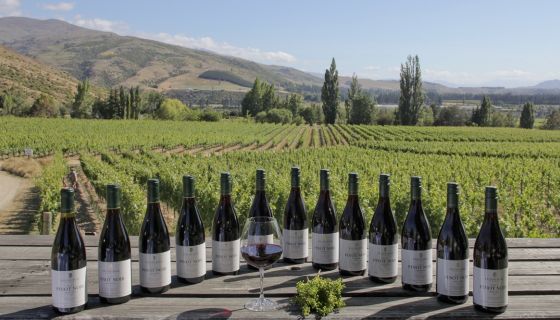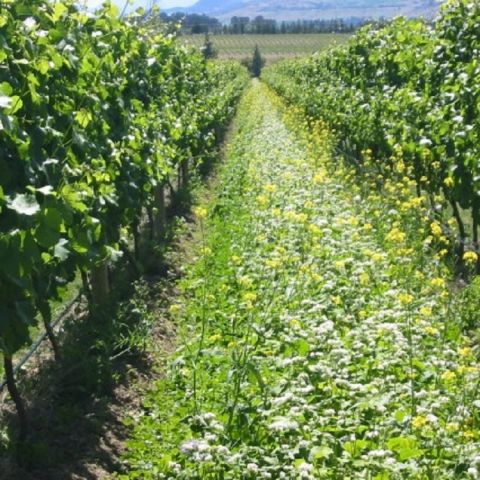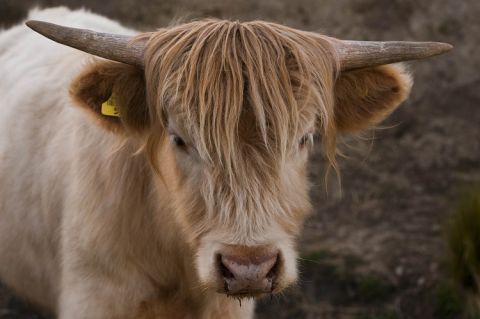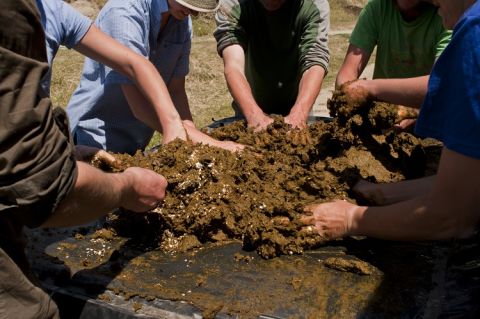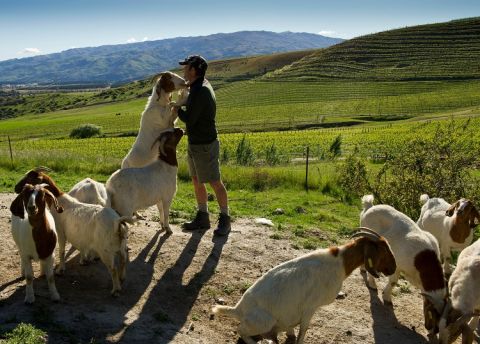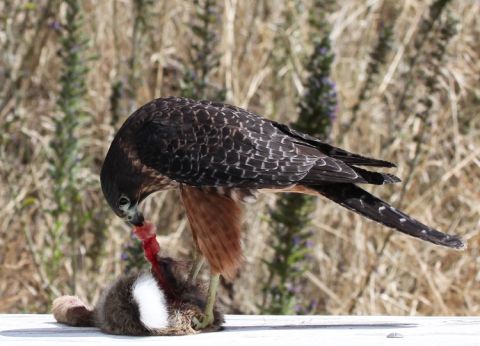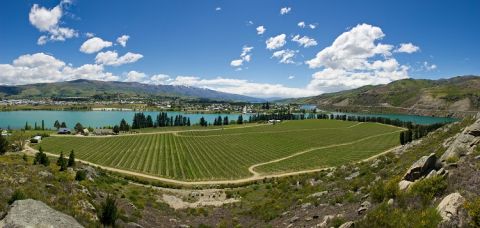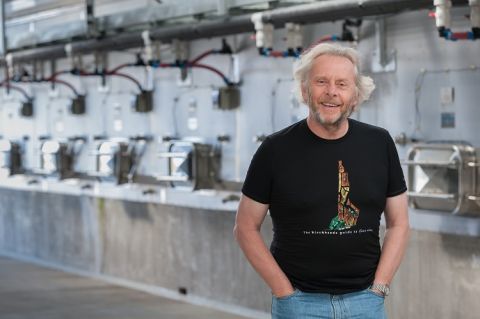Taking care of terroir: the relational ecology of Felton Road
With 98% of New Zealand’s vineyards and wineries subscribing to the country’s Sustainable Winegrowing scheme, progressive producers like Central Otago’s Felton Road set the bar even higher. From their land care and winery practices to their careful considerations of every aspect of the product life cycle, sustainability defines their essence. Driven by the ideal of making wines that reveal a strong sense of place, Felton Road understands that this can only be realised by taking care of the land.
Land care at Felton Road
As a certified organic (BioGro) and biodynamic (Demeter) vineyard, Felton Road sees wine’s unique ability to express place introduces a double aspect to sustainability: It is a matter of environmental conservation in general and keeping sites true to taste specifically. Hence, Felton avoids using chemicals not only because they are contaminating, but they also bring a ‘somewhere-elseness’ into the ‘somewhereness’ they wish to preserve.
Applying the same logic to organic inputs, they grow crops like pea and wheat straw for compost making, eliminating the need to bring in compost from elsewhere. Even more extreme, pressings and stems from winemaking are sent back to make separate compost for each vineyard. They only allow the indigenous yeasts of their land and winery to be used in their winemaking, as these microbial populations are part of the Felton Road’s ‘somewhereness’.
In spring, mixed cover crops such as phacelia, buckwheat and mustard are sown between vineyard rows, attracting beneficial insects and assisting in myriad ways, including:
- regulating vine growth
- water and wind erosion
- weed control
- enhancing soil fertility, structure and nutrient value
- soil stability and water-holding capacity
- enhancing biological diversity and activity in the root zone
Following a lunar calendar, biodynamic ‘preps’ are made and stored in Felton Road’s ‘Voodoo Lounge’. Horns from the highland cattle that graze directly above the vineyards are stuffed with the herd’s manure and buried in the ground over winter. When the moon is right, a highly energised and microbially enriched potion is mixed and hand-sprinkled onto the vineyard, providing nutrients to the microorganisms and eventually the vines.
But we’ve jumped ahead. The trail for the highland cattle was blazed by goats! The steep slopes surrounding Felton Road are covered with Sweet Briar, a wild rose introduced by Otago’s gold-mining settlers for rose hips (a good source of vitamin C). The local norm of burning or spraying the invasive species with harsh chemicals was not an option for Felton Road; they sought an ecological solution.
The answer was goats. These intelligent and hardy animals love roses and will eat them over grass or other plants. Today, Felton Road has a fifty strong herd roaming the hills. Each year sees about twenty-five kids, plenty for sustaining the herd and giving the team a year-round supply of fantastic meat (think the best lamb you have ever had, but much leaner). Perfect with homegrown Pinot Noir.
By adding wastewater and goat manure to the hillsides, Felton Road increased the soil fertility and grass growth, which warranted running the highland cattle. Essentially, a scrubby piece of Central Otago hillside has become a productive organic beef and goat farm. Down in the vineyard, a flock of chickens naturally cultivate and fossick under the vines, providing fresh eggs and fertiliser.
Ample plantings surrounding the vineyard and winery are dedicated to native flora. The flowers, nectar, berries and shelter attract and support indigenous populations of birds, lizards and insects. Felton Road has helped raise and release three native New Zealand falcons (Kārearea), which also contribute to the local ecology. These endangered raptors feed on rabbits, Central Otago’s top pest, and also keep the birds away from the vineyard. Felton also traps non-native mustelids (ferrets, stoats and weasels), who have caused widespread decimation to indigenous species.
The clean, clear water that fills their waterways and dams provides a healthy environment for trout and other wildlife. As Central Otago is essentially a desert, most winegrowers depend on irrigation. However, there is no shortage of water due to the enormous mountain flows into the lakes and rivers and the fact that drip irrigation is very efficient. Fiordland, one of the wettest places on Earth (often raining eight metres a year!), lies a hundred kilometres to the west. The Kawarau river that runs past Felton Road has a large, constant flow from the titanic rain, with less than one per cent diverted for human use. Despite the abundance, they take great care not to waste it, irrigating only when vitally necessary and returning all used water either to the ground or hillsides.
Sustainable winery practices
Waste minimisation is something of an obsession at Felton Road. For most wineries, the largest source of waste is lees, the sediments left over from winemaking, consisting mainly of dead yeast and tartaric and malic acid. It isn’t particularly hostile stuff, but waste systems that deal with the mixture are energy-intensive and expensive, so ideally, a winery would do without one. But is that possible? Felton Road has demonstrated it is.
Their solution? Don’t throw anything away. Nothing whatsoever goes down their drains unless they’ve failed to find a better use for it. Lees solids are composted, while the liquid stuff goes to a beautiful wood-fired copper still, where it is distilled into ‘Fine’ (brandy made from lees). Roughly a thousand litres of lees yields about a hundred litres of wonderful brandy.
The entire vineyard and winery operation – 75 ha of land in total, 32 ha of grapevines and 150,000 average annual bottle production – relies almost exclusively on one domestic size bin for non-recyclable waste, emptied fortnightly. By exercising vigilance when ordering materials to ensure that products don’t arrive with non-recyclable packaging, Felton Road’s landfill waste stream is extremely minimised.
All paper, cardboard and glass bottles used at the winery are recycled. Even the beer they drink at harvest time (it takes a lot of beer to make good wine!) is from kegs to minimise the use of glass. All food waste and coffee grinds (winemakers can drink a lot of coffee!) are composted on site. As they are in a remote area, Felton Road is particularly aware of the need to source as locally as possible to minimise carbon transport costs.
Solar panels supply most or all of the winery’s energy needs. If they require extra power on winter or cloudy days, the electricity supply is from a local, community-owned company that operates a small, 100% renewable hydropower station fifteen kilometres away. They've replaced the petrol forklift with an electric one and invested in an electric vehicle and charging station.
The winery was designed and built into the hillside, enabling gravity to be used for most winery operations. Power consuming activities like pumping are thus greatly reduced. Underground cellars provide ideal conditions for ageing the wines, further reducing energy consumption. Felton Road also utilises seasonal temperature variations as much as possible. For example, they open the cellar doors in Spring, allowing warm air to encourage secondary or malolactic fermentations.
Finally, a humidification system minimises the evaporative losses of wine. With Central Otago’s low humidity, evaporative losses are significant, and such measures reduce the loss from approximately 6% to 3%. Why spend all that energy, time and money growing and making wine, only to then have it evaporate from the barrels?
Social sustainability
Biodynamic philosophy requires an equal level of care to everything in the environment, including people. Felton Road assumes responsibility not only for offering jobs, but creating flexibility so that their needs match those of local people, including retirees and families. They’ve worked hard to bring young talent into the region, providing a steady stream of enthusiastic staff to carry out their winegrowing operations, while creating international awareness of the region.
Felton Road strongly emphasises on providing a healthy working environment and has been accredited with New Zealand’s highest level of workplace safety measures. The company looks after their staff well, with all full-time employees earning more than New Zealand’s ‘living wage' (a higher wage than the minimum). Bonuses are paid and a heavily subscribed, fully paid intern system is in place. Every spring, staff plant a vegetable garden and enjoy convivial lunches where much of the produce and protein (rabbit, hare, goat, beef) have come off their own land.
‘The acid test is that the only time people leave Felton Road is when the company encourages them to reach higher elsewhere’, explained owner Nigel Greening. Most of the key people have been there for decades. The company operates a charitable trust and contributes to a variety of charities in developing countries. Additionally, every year, large format bottles and older vintages are donated to charity auctions in New Zealand and abroad. According to Nigel, they can do all this because they are successful as a business, but clearly their success has come from sustaining their people and environment.
Wine lifecycle and carbon costs
The wine industry’s single greatest carbon input is glass. For many years, Felton Road has used lighter weight wine bottles. Their current bottles weigh 417 grams, which is 22% less than their previous, already light bottles. Many premium wineries use significantly heavier vessels. By using light bottles made in New Zealand from 65% recycled glass, energy requirements for manufacturing, recycling and shipping are reduced. As Felton’s wines are made to age, alternative materials don’t stack up. While using kegs makes sense in some areas, Felton Road is very remote from their points of sale, meaning the movement of kegs would exceed the carbon cost of glass.
Eschewing excessive packaging, Felton Road’s wines are not dressed up in wooden boxes with decorative straw and tissue paper. Instead, they use (and reuse) recycled cardboard boxes. For international shipping, the protective sleeves for the bottles are made from waste wool from the local farming industry. The wool sleeves are effective and have many ongoing uses for customers after the wine arrives.
Acknowledging the carbon cost of barrels, Felton purchases their French oak from two PEFC certified coopers. Increasingly, they minimise the use of new barrels to 25–30% for their Pinot Noir. When the barrels reach the end of their wine life, they are repurposed at nearby Cardrona Distillery, who make a pink gin that raises money for breast cancer research.
All Felton Road wines are sealed with screwcaps made from aluminium. When compared to the carbon cost of natural products like cork, they argue that aluminium screwcaps have significant advantages. While it's carbon expensive to smelt, aluminium is infinitely recyclable. Felton’s screwcaps are made in Australia, which is closer than shipping corks from Portugal and the failure rate of this closure is virtually nil, compared with the 3–10% (and significantly worse as wine ages) failure rate of corks. When the energy and carbon cost is calculated on all the faulty or undrinkable bottles, aluminium screwcaps look favourable. Moreover, almost all cork closed bottles utilise a foil made of tin or aluminium to ‘dress’ the bottle. The large cardboard boxes that their screwcaps are delivered in are sent to a local moving company to be reused.
Having undertaken a carbon audit, Nigel is quick to raise the boundary question: If you are trying to count energy use for a product or activity, where is the boundary between you and others? For instance, should a winery count the carbon cost of making a winepress in their calculations, or is that the responsibility of the manufacturer of the press? One argument is that wineries should since the press was only made because they needed it. However, that argument takes one down an endless path: do you account for the steel, for the mining of the iron ore, for the manufacture of equipment used in the mining, etc.? For Nigel, this leads to ‘a sort of accounting reductio ad absurdum that makes assessment impossible and endless double accounting in carbon cost’. Thus, Felton Road focuses primarily on what they do and have control over. Driven by the ideal of making world-class, site-specific wine, they proceed from a deep, creative and humble understanding that this can only be realised by taking care of terroir.

